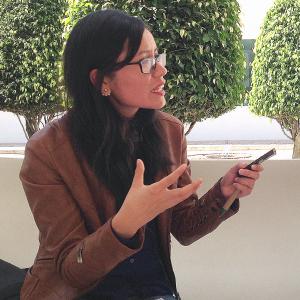Peru finds itself in a complicated, uncertain and politically unstable situation amid protests that have rocked the country since former President Pedro Castillo was removed from office in December 2022.
The ongoing crisis has presented challenges and safety risks for journalists: as of early February, nearly 60 journalists counted among those injured during the unrest, reported the Washington Office on Latin America.
ICFJ’s Spanish-language Pamela Howard Forum on Global Crisis Reporting convened Peruvian journalists who have been reporting on their country's crisis since December 2022. Zoila Antonio Benito, founder and director of La Antígona; Carlos Cornejo Alayza, director of the La Factoría news agency; photojournalist Arturo Gutarra, and journalist Alejandra Garboza shared their experiences and how they manage to carry out quality journalism in Peru's complex reality.
Look back to history and understand the present-day context
Journalists should look back at least 25 years in Peru’s history to inform their coverage. The foundations of the current political crisis were laid at this time, as institutions began to weaken and democratic representation waned, said Cornejo.
For Benito, three failures impede the country's stability: the inability to listen to and speak with one another, the personal interests of legislators, and the country’s historically deficient democracy. The first of these problems is rooted in the government's tendency to rely on perspectives coming out of the capital city of Lima to address issues, thereby minimizing the needs of other parts of the country.
The main demands of the protesters – closing Congress, creating a new constitution and holding new elections – speak to the need for structural reform. If not addressed, they could continue to exacerbate the polarization, appeal of cults of personality, and police repression in the country.
The social and economic welfare ratings in Peru have been unequal for years, noted Benito, with high levels of poverty, severe food shortages and the mining industry exploiting the country’s natural resources.
It’s necessary, stressed Garboza, to lean on journalism basics and cover all aspects of an issue. Cornejo added that it’s important to use journalistic investigation and reality to tell the truth, too, rather than opinions.
Critically consume reporting from independent media outlets
In times of political crisis, it is essential to be discerning about the information we consume online. Journalists need to check their sources and conduct their own verifications, Benito said.
Journalists can look to independent media, too, which may produce coverage that goes beyond traditional media outlets with their set editorial lines. "We have to look everywhere and be critical of the media organizations themselves," Garboza said.
Although traditionally, readers in Peru have turned to large media outlets for information, many independent newsrooms in the country produce high-quality coverage. Unfortunately however, these independent outlets often don’t have the same resources as the larger outlets to distribute their content.
Create a safety plan for field reporting
The violent demonstrations and police repression in Peru of late have forced journalists to learn how to protect themselves and develop reporting plans before heading into the field. Gutarra, a photojournalist, stressed the importance of analyzing the area in which you’ll be reporting, so that you know where to position yourself and what your exit route should be, if necessary.
Carrying protective equipment has also become essential for field reporting. This includes having a helmet and comfortable clothing, a bulletproof vest, goggles and a mask that protects you from inhaling gas used by the police against protestors and reporters.
Not only do photojournalists have to deal with abusive behavior during demonstrations, they also have to document injuries and fatalities that may happen in their presence during the unrest. This often leads photojournalists to question their role as journalists -- within seconds they may have to decide between helping people who are wounded and photographing developments.
Develop journalist support networks and take care of your mental health
If no resolution is reached soon to stem the crisis in Peru, the country could reach even higher levels of violence. Journalist support networks and communities of photographers that have emerged during this time provide some relief, said Gutarra: journalists can look to one another for support amid the trust that has been lost with law enforcement, in particular.
Peruvian journalists know that they may differ editorially, but when they’re on the ground covering what’s happening in the country, they are all colleagues facing the same set of risks. Hearing gunshots and witnessing people cry, scream and ask for help can be frightening.
With the passage of time, journalists may grow accustomed to these circumstances, but this doesn’t take into account the toll on their emotional and mental health. The support that journalists are offering each other has led them to be more united, like a union would be, said Benito.
Main image by Samantha Hare on Flickr.
This article was originally published by IJNet in Spanish. It was translated to English by journalist Natalie Van Hoozer.


